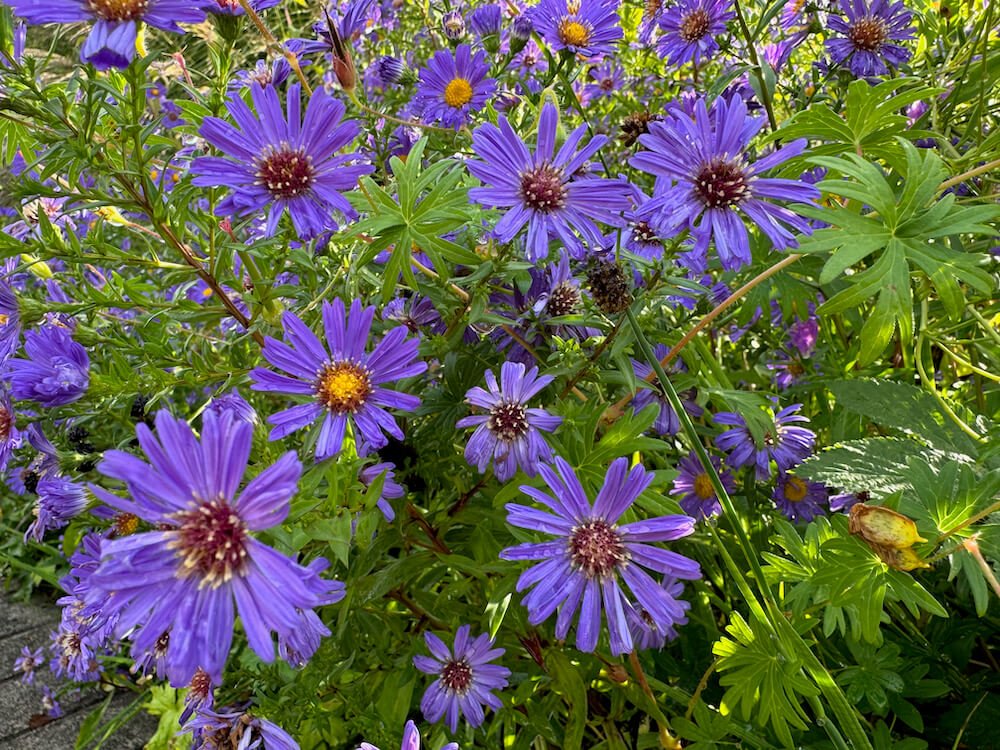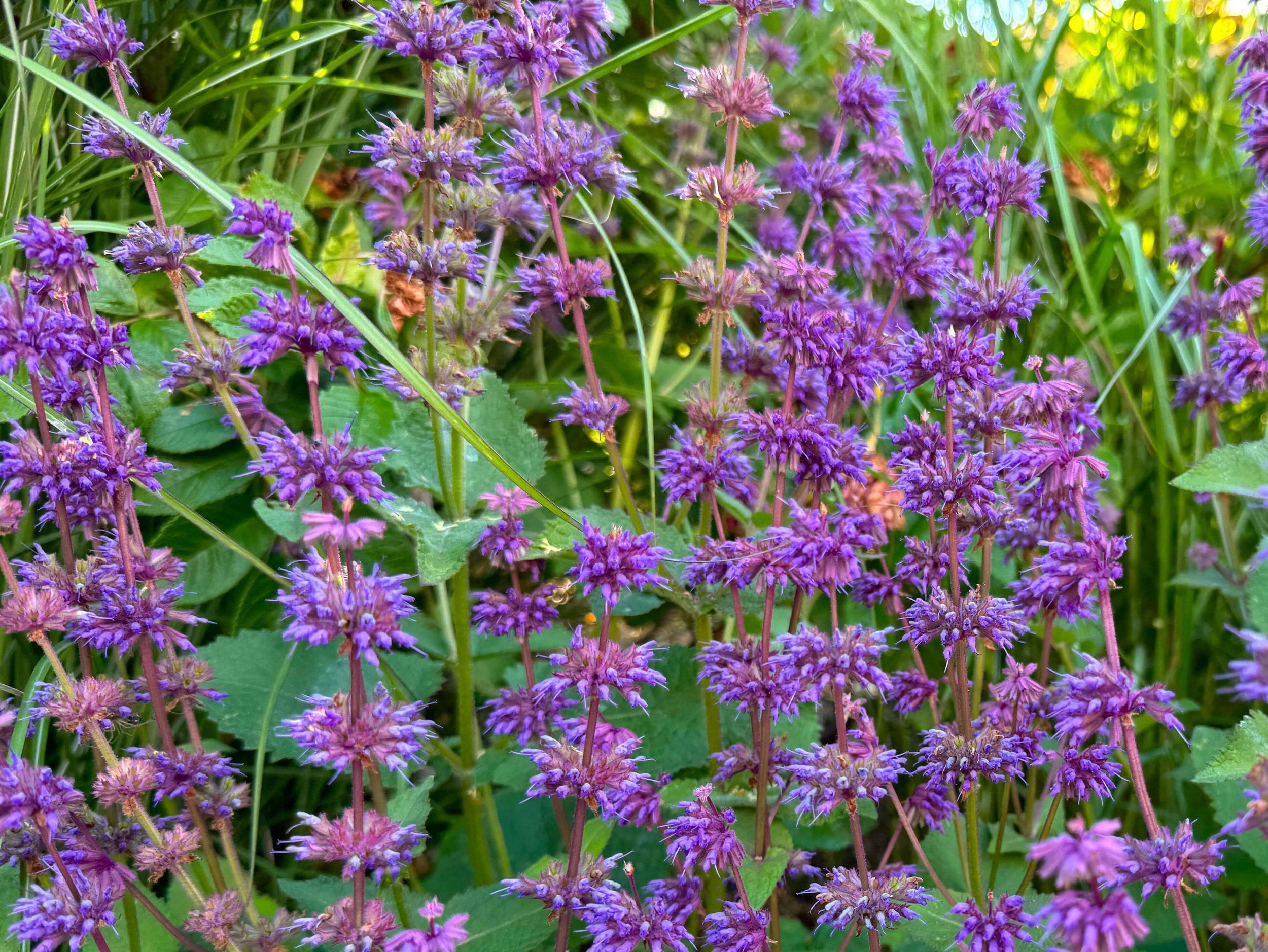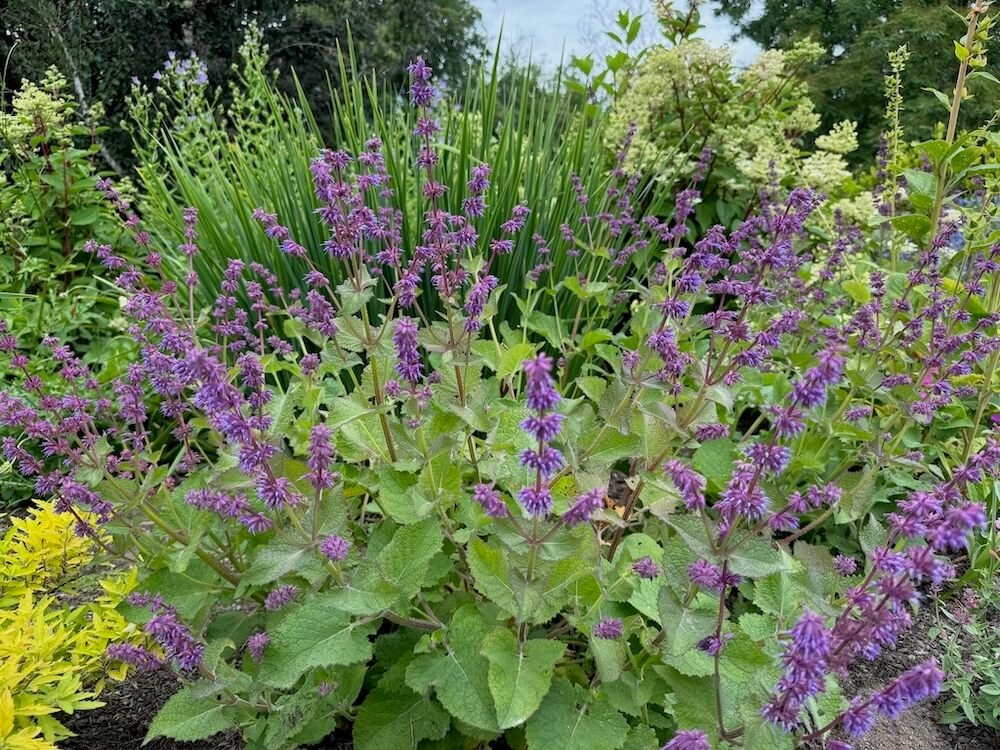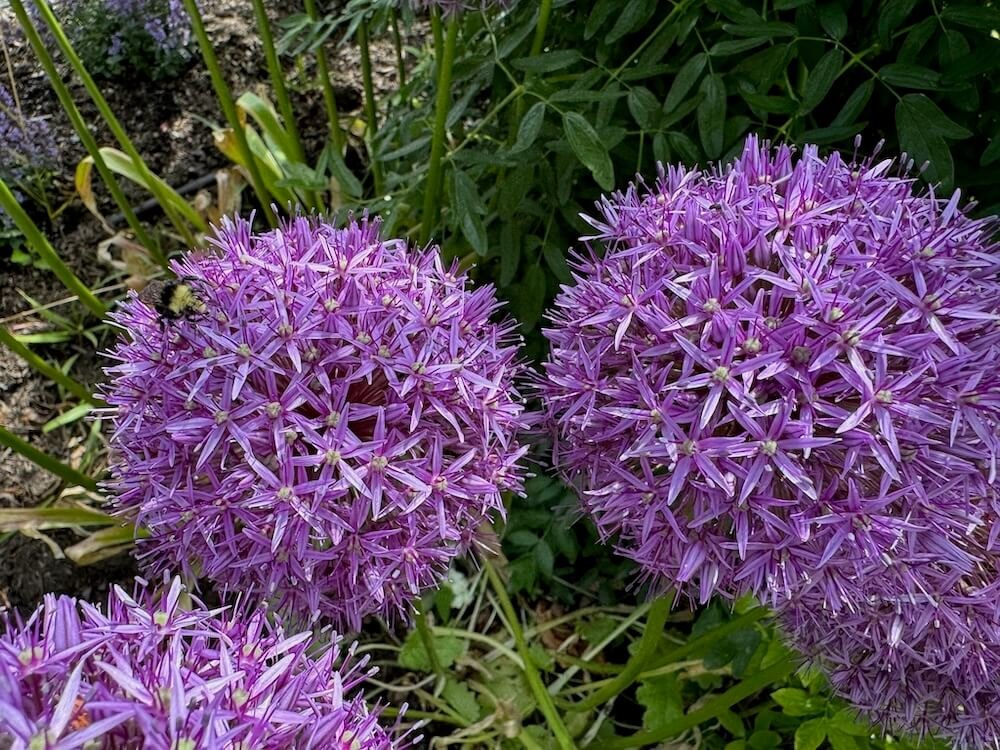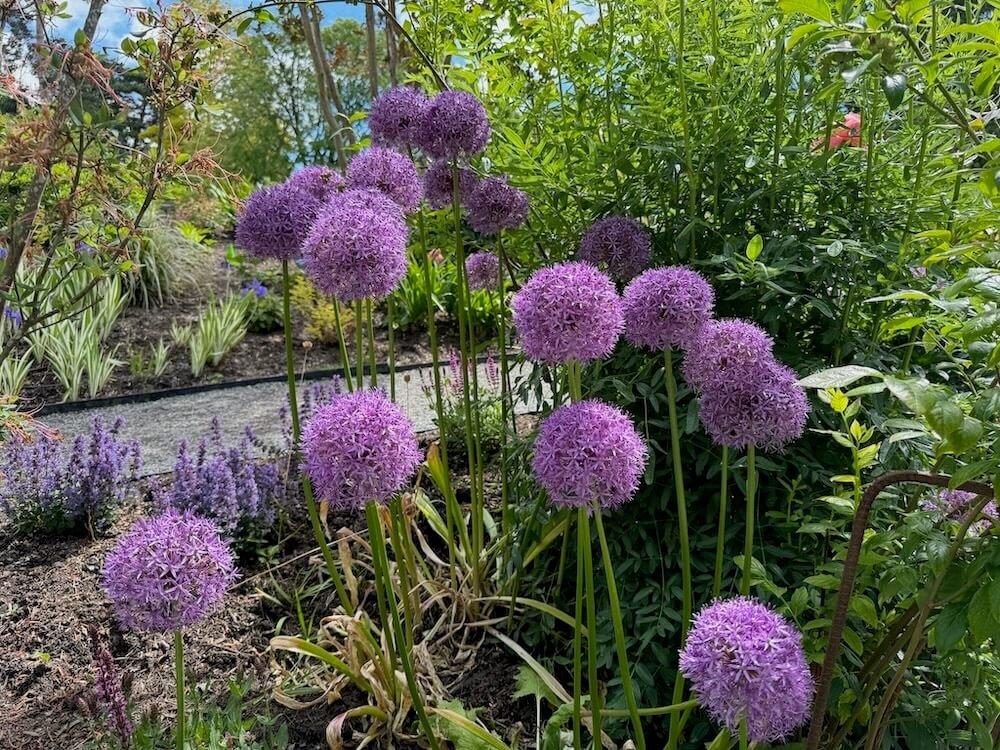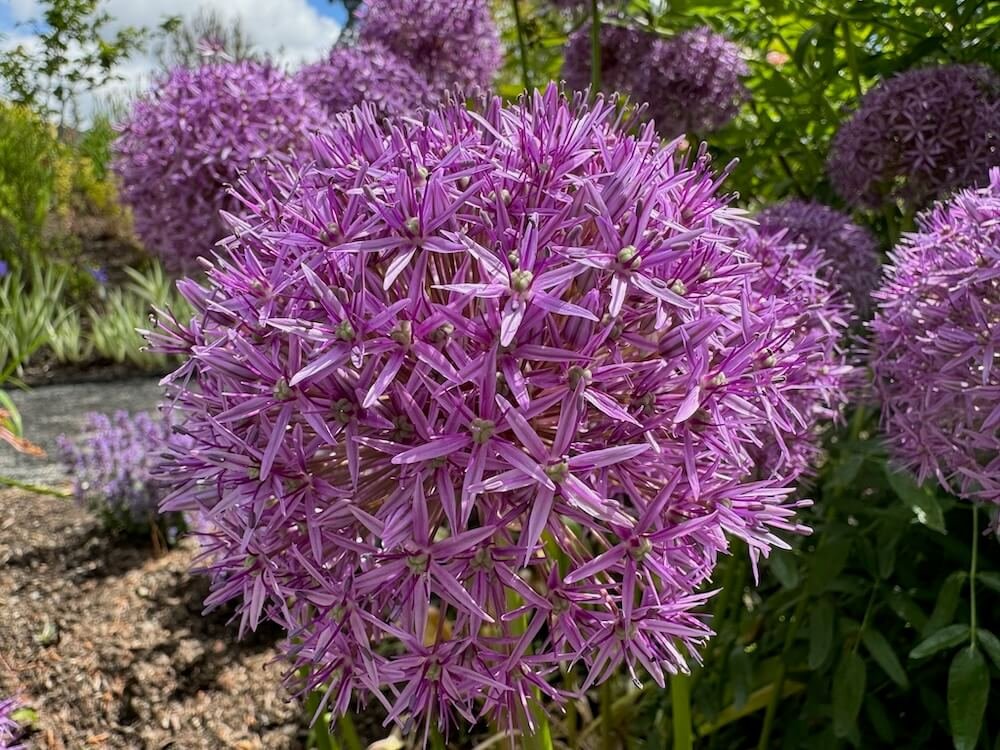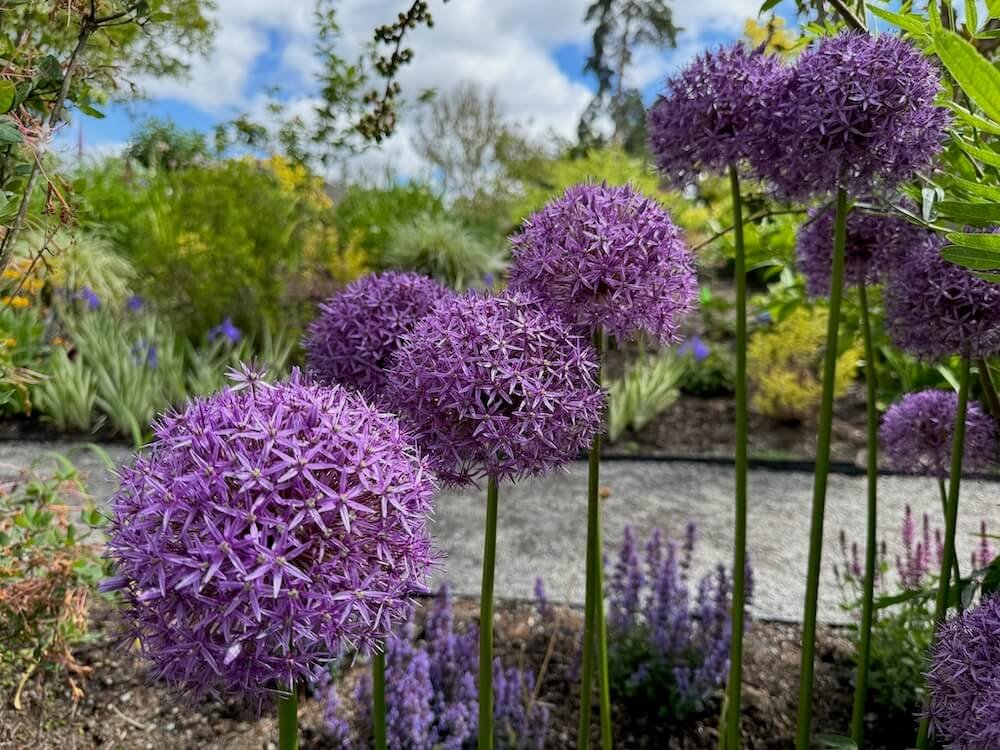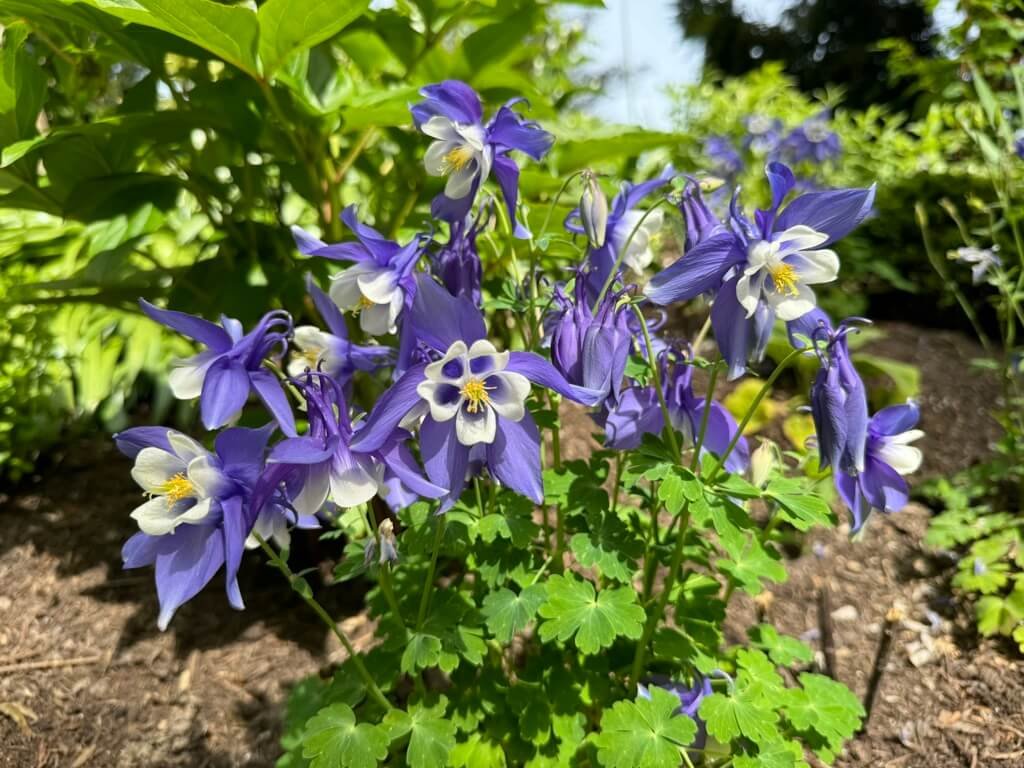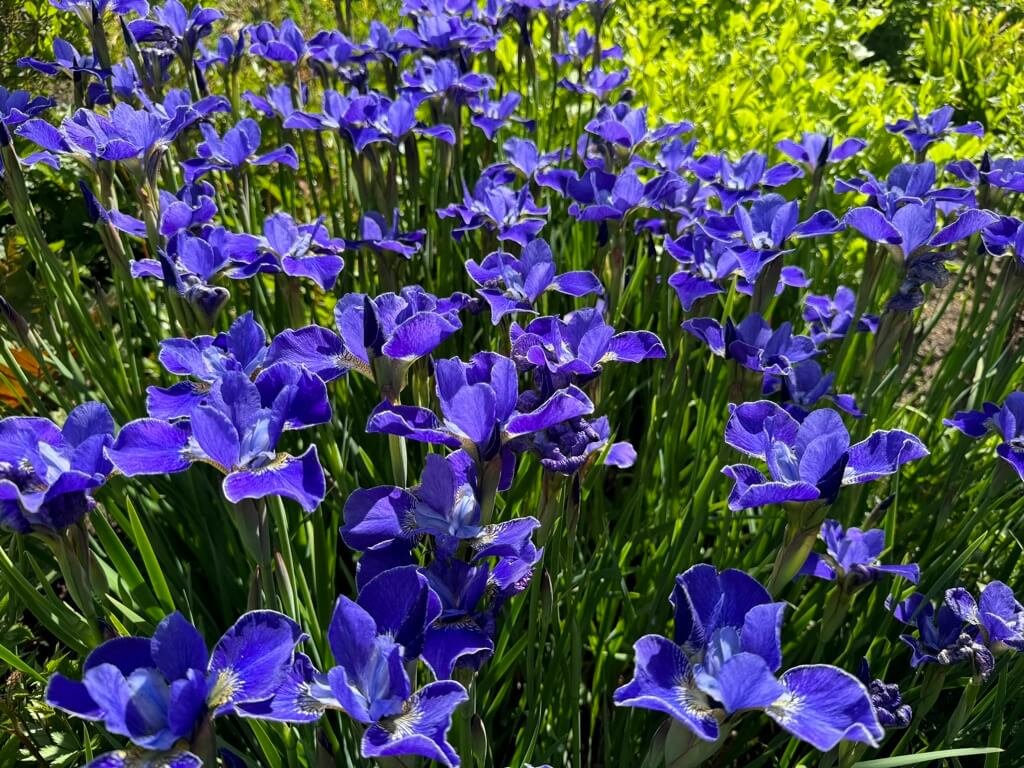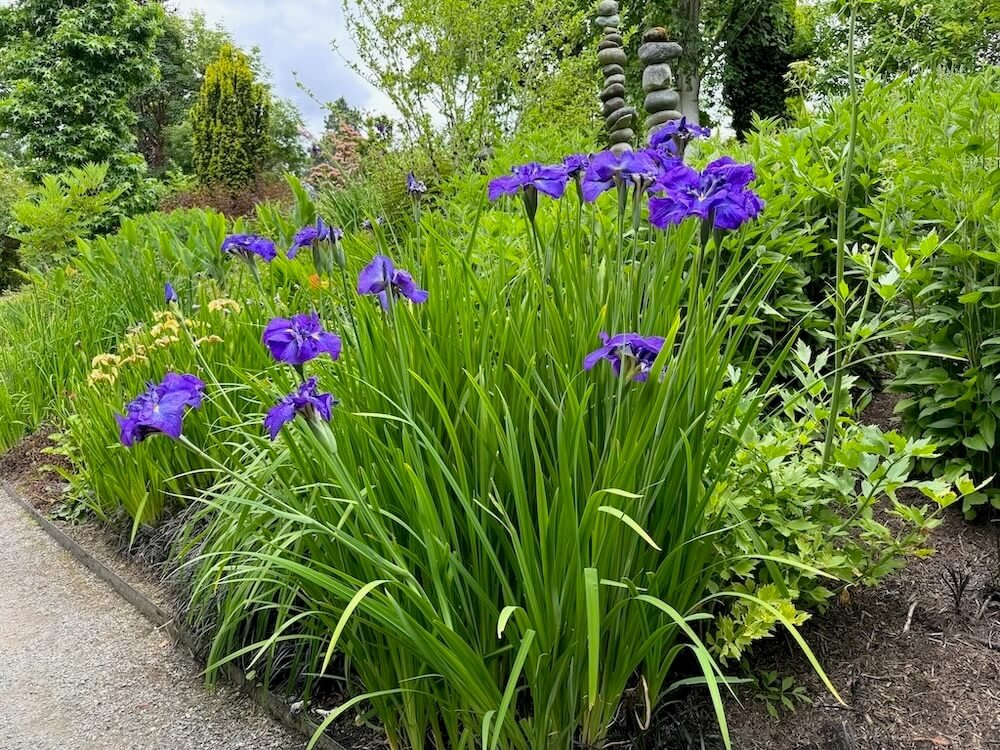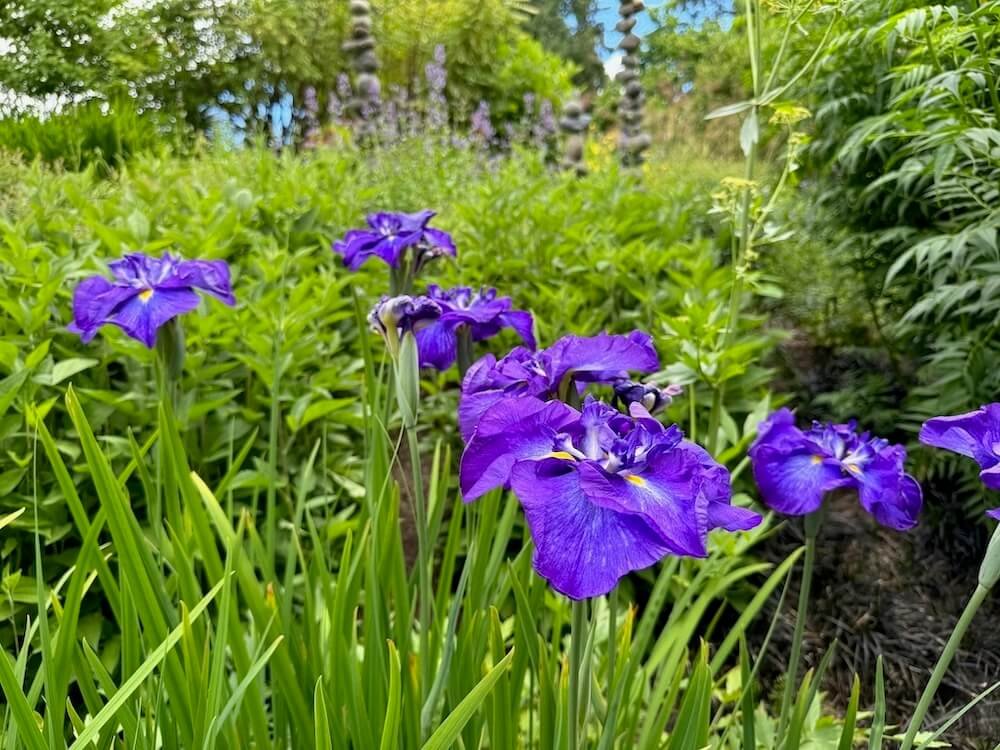DESCRIPTION
Symphyotrichum novae-angliae, is a perennial native to eastern North America. It is often found in prairies, meadows, and along roadsides, where it thrives in full sun and well-drained soils. This plant blooms from late summer to fall, producing an abundance of vibrant, purple flowers with yellow centers. The blossoms, which attract pollinators like bees and butterflies, create a colorful display in the late-season garden.
One of the standout features of New England aster is its large, showy blossoms with numerous stamens that give it a fluffy, star-like appearance. This aster is known for its resilience in tougher conditions, making it a favorite in naturalistic gardens and landscapes. The plant's tall, upright stems are often covered in dense, lance-shaped leaves that contribute to its overall texture.
DESCRIPTION
Symphyotrichum novae-angliae, is a perennial native to eastern North America. It is often found in prairies, meadows, and along roadsides, where it thrives in full sun and well-drained soils. This plant blooms from late summer to fall, producing an abundance of vibrant, purple flowers with yellow centers. The blossoms, which attract pollinators like bees and butterflies, create a colorful display in the late-season garden.
One of the standout features of New England aster is its large, showy blossoms with numerous stamens that give it a fluffy, star-like appearance. This aster is known for its resilience in tougher conditions, making it a favorite in naturalistic gardens and landscapes. The plant's tall, upright stems are often covered in dense, lance-shaped leaves that contribute to its overall texture.

